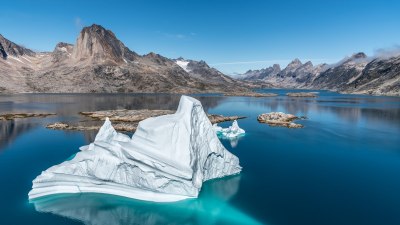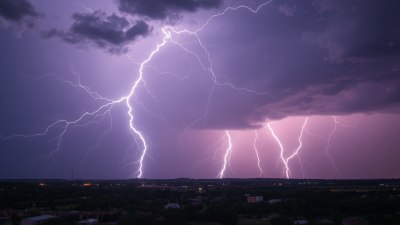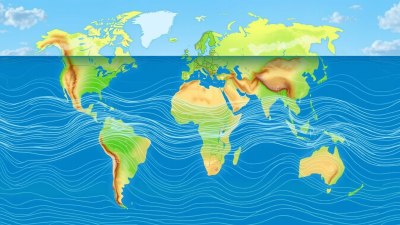How Weather Influences Iceberg Formation
Discover how weather conditions shape the formation and the dynamics of icebergs in our oceans.

Icebergs are magnificent natural phenomena that evoke awe and curiosity, often associated with cold climates and the vastness of the polar regions. Their formation is a complex process deeply influenced by various weather conditions. Understanding the link between weather and iceberg formation is essential not only for scientific knowledge but also for navigation and environmental study.
The Basics of Iceberg Formation
Icebergs are formed from freshwater glaciers or ice shelves that break off into the ocean. The process begins with the accumulation of snow in polar regions, which compresses into ice due to the intense pressure over many years. This ice can then flow slowly under the influence of gravity. However, it is crucial to recognize that the surrounding weather conditions significantly impact this process, determining when and how glaciers calve—essentially, the birth of icebergs.
Temperature Variations and Their Effects
Temperature plays a pivotal role in iceberg formation. Warmer temperatures lead to increased melting of glaciers, which in turn can create large cracks and crevasses in the ice. When temperatures rise, the rate of ablation—the process of ice melting—increases. If the melt rate exceeds the accumulation of new snow and ice, the glacier can shrink, making it more susceptible to calving.
Precipitation Patterns
Precipitation is another weather factor that influences iceberg formation. Areas with heavy snowfall typically produce larger glaciers as more material is added to the ice mass. In contrast, regions with less snowfall may not have enough ice accumulation to support significant calving events. Moreover, rain can also accelerate the melting of existing ice, leading to increased calving events. Thus, both snow and rain significantly impact the mass balance of glaciers, influencing their potential to produce icebergs.
Wind and Ocean Currents
Wind patterns can affect iceberg formation and movement by redistributing snow and influencing the surface behavior of the ocean. Strong winds can create waves that contribute to the calving of ice, while also impacting the way icebergs drift once they have broken away. Ocean currents, affected by wind, also play a crucial role in transporting icebergs away from their calving locations, impacting both the local environment and navigation routes.
Climate Change Implications
Climate change presents significant challenges and changes to the weather patterns affecting iceberg formation. As global temperatures continue to rise, increased melting of glaciers and the accelerated calving of icebergs have been observed. These changes are alarming, affecting sea levels and marine ecosystems. The dynamics of iceberg formation, therefore, must be understood within the broader context of climate change, and scientists are rapidly working to model and predict future scenarios.
The Role of Ocean Temperature
Ocean temperatures also play a critical role in determining the stability and longevity of icebergs once they have calved. Warmer ocean waters accelerate the melting of icebergs, which can pose hazards to maritime navigation. Understanding how ocean temperatures interact with iceberg dynamics is essential in mitigating these risks. Ocean warming impacts not just iceberg integrity but also the ecosystems that rely on cold-water habitats.
Seasonal Influences
Seasonal changes significantly affect iceberg formation rates. Each year, as spring and summer arrive in polar regions, temperatures rise, leading to increased melting. For instance, during these seasons, many glaciers experience heightened calving activity. Conversely, during the colder months, more accumulation occurs, creating a balance between ice formation and melting. This cyclical behavior is key to understanding the annual patterns of iceberg formation.
Monitoring Iceberg Dynamics
Advancements in technology have allowed scientists to monitor iceberg formation and movement more accurately. Satellite imagery, remote sensing, and buoy data contribute to understanding how weather influences these formations. By studying these ice masses over time, researchers can develop models to predict future iceberg activity based on current weather conditions and forecast changes.
Human Interaction with Icebergs
Human activities, particularly in regions adjacent to glacier fields, can impact local weather patterns, which in turn affect iceberg formation. Factors such as urbanization, land use changes, and pollution can lead to alterations in the microclimate of an area, potentially influencing how glaciers behave. Understanding these interactions is crucial for sustainable development and environmental management.
The interaction between weather, climate, and iceberg formation is a fascinating area of study with significant implications for environmental science and navigation safety. As we wake up to the realities of climate change, understanding this relationship becomes increasingly critical. Protecting our polar regions, monitoring influential weather conditions, and advancing research on iceberg formation can help us better predict future changes in the polar ice landscape.











